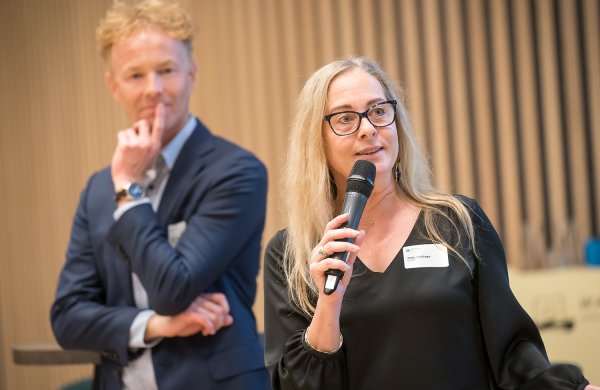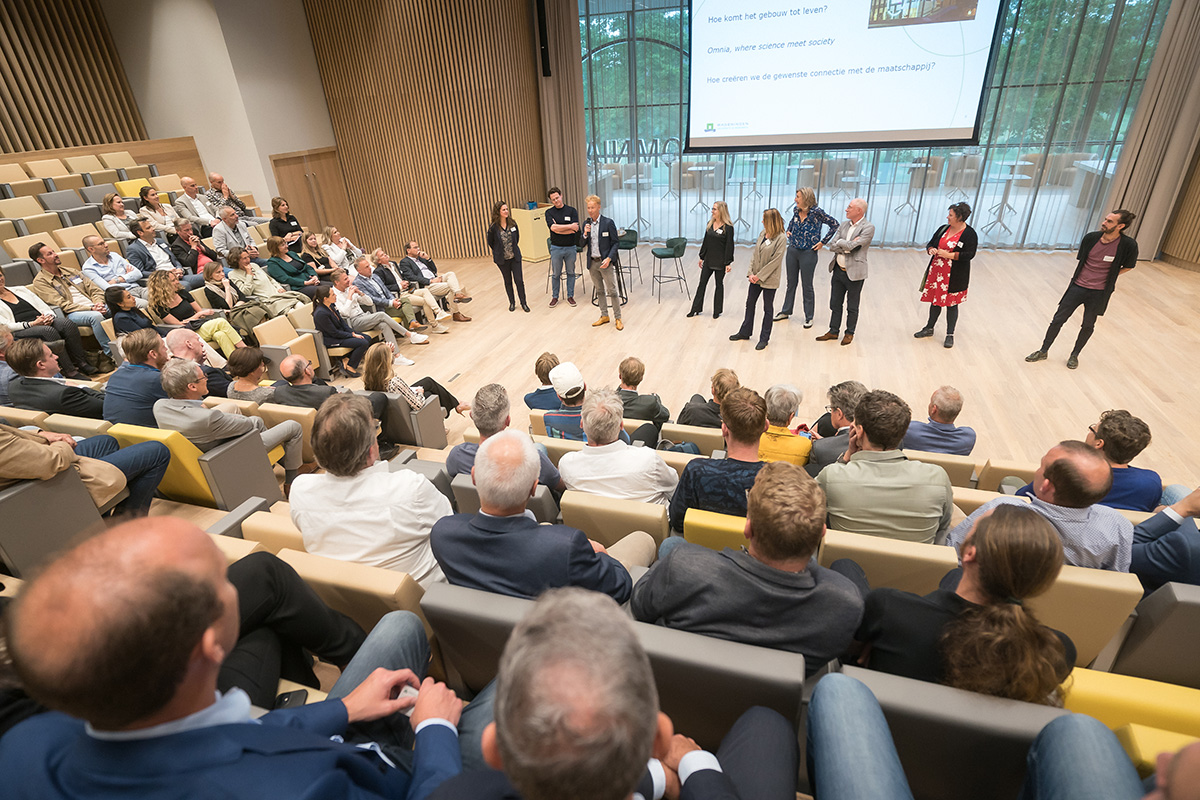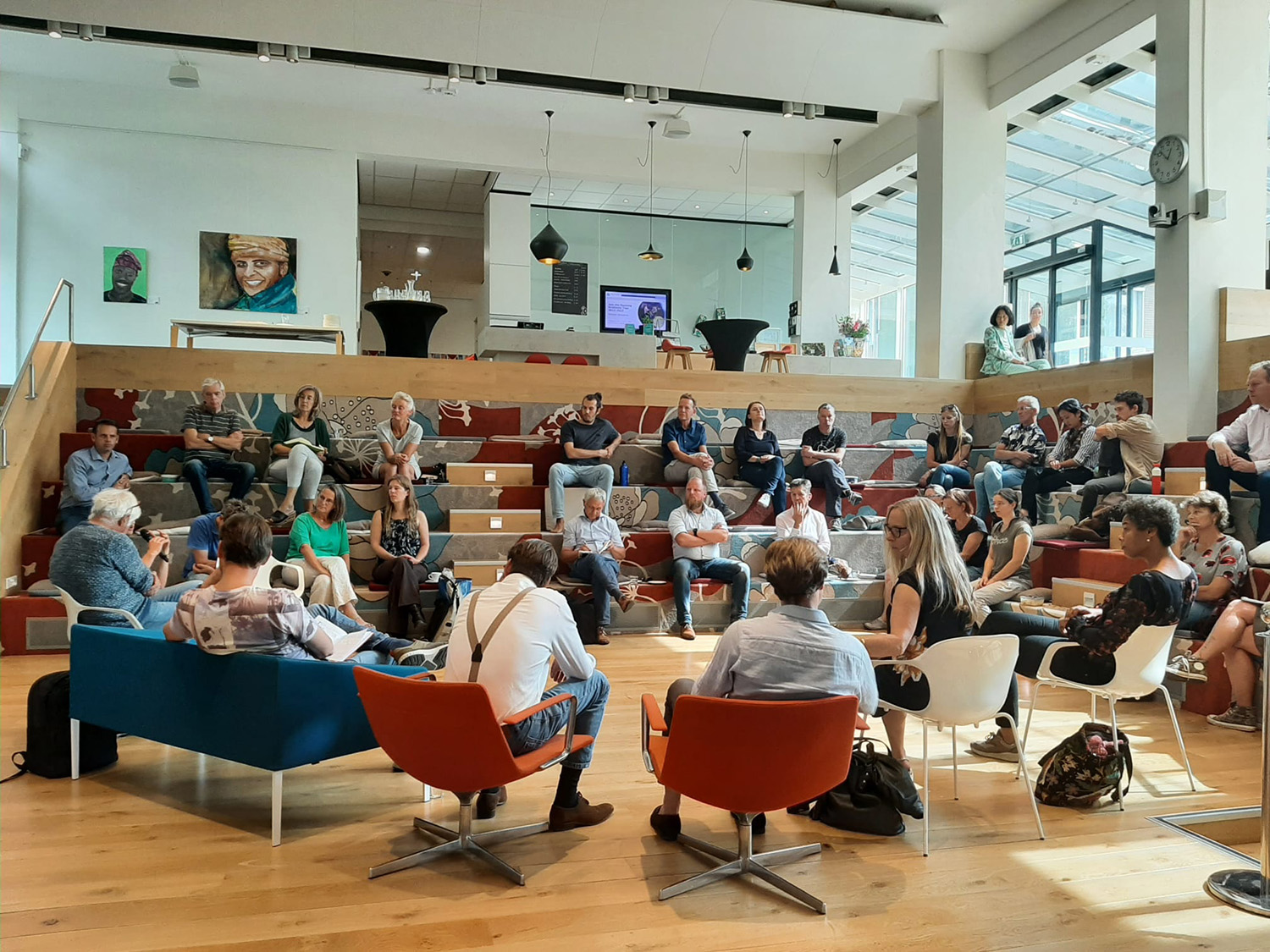
Blog
Bridging the gap; dialogue as connecting panacea?
In the ever-evolving landscape of (science) communication, one word often echoes as a guiding principle: dialogue. I have been fervent believer in the pivotal role of dialogue in the communications function for a long time. It can provide an optimal exchange of perspectives and play a constructive role when emotions are involved. In this blog, I will go into this, elaborate on how and when to use dialogue, as we experienced during our most recent dialogue about ‘The four futures of meat’ at the National Day of Science Communications on 9th October.
Listening beyond words
Science has become increasingly intertwined with society. Knowledge institutes, including universities and research institutes, increasingly realise that, to remain trustworthy and relevant, it is important to ‘open up’ to society (Berg & Lidskog, 2018). This entanglement goes beyond scientific research as such. It covers the way science is communicated, utilized, and applied within society. It is after all through this connection with society that science can fulfil its potential to improve life and contribute to a sustainable, equitable, and informed world.
Tackling complex societal challenges requires navigating a complex landscape of diverse perspectives, often intertwined with strong emotions. This multi-layered context poses an important challenge, particularly for policy makers and engaged stakeholders. Being immersed in this dynamic demands more than hearing what is said, it requires listening to what is not said, to be observant to what remains unspoken. I truly believe that a constructive dialogue between researchers, experts, stakeholders and citizens can be of great value in this context. Exchanging beliefs, ideas, information and perspectives can foster mutual understanding, encourage empathy, facilitate collaboration and promote critical thinking.

Integrating dialogue in research is one way to make research inclusive and relevant. Other possible ways are e.g. citizen science, living labs, open science, or transdisciplinary research projects. (Brandt et al., 2013; European Commission, 2016; Hecker et al., 2018; Kalinauskaite et al., 2021; Wehrmann et al., 2023).
The power of resistance
A wise friend (a scientist) recently said that scientists should avoid assuming the role of the ‘all-knowing entity’. I believe he rightly cautioned for science not to occupy the metaphorical ‘seat of God’. This advice resonates deeply in the realm of science communication. The stronger science is positioned as the ‘monopoly of the truth’, the more resistance might be mobilised. It underscores the importance of being careful to present science as THE authority.
Resistance itself does not need to be a problem. One may even find wisdom in resistance, as I have been taught by the (Lewis) Method of Deep Democracy. From a shared sense of urgency, one could generate an opening to change a stalled debate into a dialogue. Hence, in my view we should embrace resistance. This is something we have been practising during the monthly 'Let's Explore' sessions on nitrogen and the cooperation with the fossil fuel industry. Acknowledging and allowing emotions to come to the fore is difficult, particularly in a scientific context. However, when one can create space for that, mutual understanding may emerge, and alternative perspectives born. Dialogue may bridge the gap between facts and feelings.

In this light, dialogue can be understood as a connecting science communication method that creates new opportunities for research, collaboration and understanding that transcend boundaries and divisions.
Looking through different lenses
Everyone takes a particular look at the world. Scientists look at the world through scientific lenses, the ones they have been taught. They are often driven by a dedicated curiosity. However, they are not confined to one single role or approach.
Scientists can take different roles depending on the context, the issues they address and who they are - the pure scientist, the science arbiter, the issue advocate, the honest broker of policy alternatives (Pielke, 2007) and the knowledge mediator (Turnhout et all, 2013).
Being aware of one's role in a dialogue helps in communication and cooperation. It enables one to tailor one’s approach to specific context and goals of the engagement. It can result in more productive and meaningful interactions, particularly with those further away from areas of expertise. It's important to explore what roles people seem to have and thus where they ‘stand’, based on answers provided and/or opinions voiced. That may indicate values and knowledge. We did exactly that during the National Science Day with a dialogue on the four futures of meat, where people could experience what it's like to engage in dialogue by listening to why people believe what they believe and what they stand for.
These roles also determine whether those outside of science are involved in research at an earlier stage than purely at ‘end of pipeline’ when results get shared. When people are involved from the start, the stage of sharing results and addressing ways forward can be very different, with a greater likelihood of ensuring ways forward. Citizen science is a very good example of this. By actively involving citizens in research and policy discussions, institutions can demonstrate their commitment to inclusivity and transparency. This, in turn, helps to (re-)build trust in these institutions and reduces misunderstanding.
Various forms and many insights
Forms matter. Different forms of dialogue can help provide deeper insights. For example, a 'soft shoe shuffle' conversation can reveal people's perspectives on a subject, even without speaking. Those who are more 'soft spoken' participate by the position they take in the space during such a conversation. This technique is one of the techniques of the Deep Democracy method, offering different ways for people to exchange perspectives on a specific topic.
In addition, our experience with 'fish bowls' is valuable. We recently used this format in a dialogue to discuss the challenges related to biodiversity loss and climate change. With this format, you ensure that not only a few, the panel lists or the 'selected scholars,' have a voice. People from the audience are invited to also participate in the discussion. Knowledge and wisdom from all those present can surface, leading to a richer understanding of what is thought and felt about a subject and possible ways forward.
More dialogue
Explore why, when and how to use dialogue in a scientific context, use the Dialogue Navigator, designed by Wageningen Dialogues. Do you want to organize a dialogue yourself, follow the Dialogue Design Guide to make your dialogue flourish.
Moving forward
The way we share scientific research results is changing, considering not only the 'what' but also the 'why,' 'when,' ‘how’ and 'with whom.' No more traditional press releases and news stories but a more dynamic and inclusive approach centered around dialogue and engagement. People in science communication should be equipped to play a vital role in identifying critical points, challenging assumptions, and fostering circular thinking and mediating dialogues. This shift in our field is work in progress.
One cautionary note. As we embark on this journey, we need to realise when certain issues or topics are part of polarised debates. One then needs to take a different perspective regarding engagement. It is a whole different ball game, something for a different blog.
Hence, listen to what is happening in society, acknowledge and embrace what is said, try to listen to what is not said and embrace dialogue. It would be so meaningful if this were to lead to more mutual understanding and trust, and a common ground to move forward regarding today’s societal challenges.
Why Dialogue at the National Science Communication Day?
National Science Communication Day is a yearly event where theory and practice converge, making it the perfect stage to discuss dialogue. At Wageningen University & Research, we have chosen to place dialogue firmly on the agenda for this event. The goal of our dialogue session during the National Science Communication Day was to provide participants with a deeper understanding of the power of dialogue. We want more people to experience first-hand what dialogue can mean in the everyday practice of science communications, especially in relation to polarized issues or societal challenges. Special thanks to Judith Sluiter, Director Communications, Ministry of Agriculture, Nature and Food quality and Anne Lutgerink, spokesperson at the Dutch Center of Nutrition, participating in the dialogue and enriching the insights on the importance of dialogue.